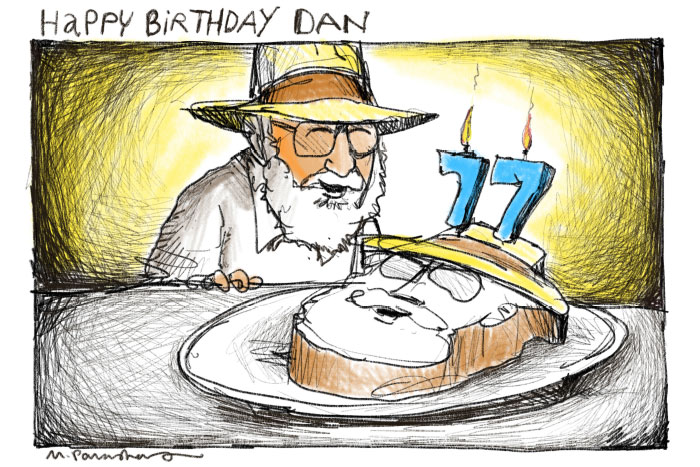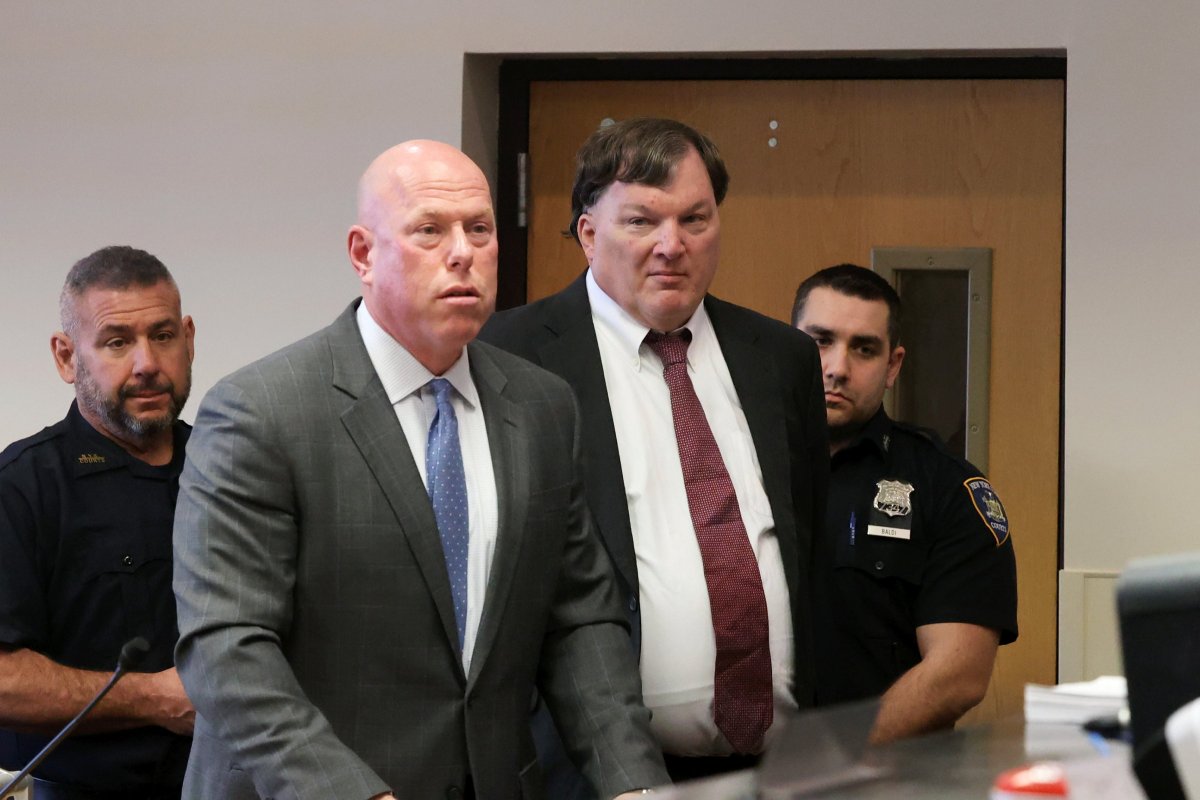Basketball Surprise: Bridgehampton Killer Bees Beat College Team in Exhibition

I celebrated my 77th birthday a few weeks ago, and it’s got me thinking about the changes I have seen.
When I was growing up, you would never see anybody out jogging or doing exercise much. The reason for this was that everyone worked very hard all day. They worked in the fields or inside in factories, making things. They kept in shape that way—screwing caps onto the tops of bottles of pickles, for example, as they came down the assembly line. They picked the crops. They came home and had dinner and read and had conversation. The women ruled the household and raised the kids.
But then everything changed. For one thing, at a certain point (around 1960) everybody got glued to the screens. For another thing, concurrently, manufacturing jobs went overseas.
After this revolution, the citizens of America broke into two parts. One part became avid runners and lifters and stretchers to keep their bodies conditioned and healthy. You see them today out jogging. The other part became couch potatoes. You don’t see them out at all.
As for me, a writer, sitting in a chair while I work, I tried running and lifting and stretching and found it either boring or harmful—a torn ligament here, a knee problem there—and so gave up and returned to sitting and writing and relaxing with couch potatodom.
This seemed to work perfectly fine for me through middle age, something I credit to my tough Romanian and Lithuanian peasant heritage. Nothing bothered me. I told my body what to do. It did it. No problems.
Passing through three score and 10, the traditional lifespan before modern medicine came in, however, I sensed a change. It got confirmed in dramatic fashion. I was attending a family reunion in a park in a small town in Pennsylvania. We were 30 people in a pavilion shelter, eating lots of home cooking brought in by the attendees, and at a certain point I noticed a nephew and his two sons, ages three and six, wandering out onto an adjacent and empty baseball field with a bat, two mitts and ball. The father pitched, the three-year-old batted, mostly missing the ball entirely, and his six-year-old brother caught and heckled his little brother for being such a bad batter.
I thought it was just so charming that I wandered on out and stood between the pitcher and first base, thinking I could get into the game if this three-year-old hit a ball my way.
The three-year-old finally hit the ball. It was a bouncer down the first base line. I stumbled to get it, the kid, legs pumping madly, ran by it, I got to it, and the kid was now rounding first and I could see his father had now backtracked to try to tag the kid out when I rifled a shot to third.
Well, it was just pathetic. I threw it as hard as I could and it just got past the mound and rolled to a stop. The three-year-old now rounded third and trotted home, his arms waving, shouting with joy. The three-year-old had hit an inside-the-park home run. On me.
I said to myself, something has to be done about this.
My routine since then—this was five years ago—is to do stretches in the morning, then go out and shoot hoops for 20 minutes. There’s a basketball setup in my yard. And when I am in the city, I play at a court in Central Park.
Altogether I shoot 60 or 70 shots in those 20 minutes every morning. My heart rate goes up to 125, I break a sweat, I finish breathless and my cheeks are red. It feels good.
I keep score. Generally, I can make 4 out of 10 shots. I count the shots made and the total shots taken. An average day will find me remarking to myself “4 out of 10” as I set up for my 11th try. I do hook shots, layups, fadeaways and one-hand pushes from a distance. I will sometimes try three-pointers. This routine is really good for focus, reflexes, stamina, concentration, depth perception, eye-hand coordination and my soul. And my keeping score keeps my mind off the fact that working out is boring.
Until recently. And herein hangs a tale.
About a month ago, beginning to feel bored, I thought to try to keep score in another way. I’d shoot and make it and it would be one to nothing. On the next shot, if I missed, it would be one to one. And so forth.
I soon found that, for the most part, I would fall behind my alternate self. Make 4 out of 10 and no matter how you cut it, you’re losing.
Indeed, in my first two mornings I lost and lost again. It was a bit depressing. I thought, what if I get three points for a shot made, but give out two points for the misses? I considered that but decided against it. It’s cheating.
On the next morning, I decided to look at this in still another new way. I would still be both teams, of course. But my team would now be a local high school team—I decided to be the Bridgehampton Killer Bees, the team from a local school that puts together a varsity team from a pool of only about 80 kids. They are known for having won nine state championships since 1978—against high school teams of similar size, of course. They have enthusiasm, great coaching and a will to win. They win. Often.
And my opposing team? I decided that they would be a championship college team from somewhere in the Northeast, condescending to play this plucky high school as an exhibition for charity. Of course they would win. Wouldn’t they?
Well, they won the first two games going away. The first was 42 to 18. They eased up for the second and we lost by 5 points. Now came the third game. We fell behind 6 to 1 at the start, then played the college team back and forth, staying that 5-point margin behind, much to everyone’s surprise, and then in the closing minutes, began to make shot after shot, pulled even, and then won by a point at the buzzer. We had done the impossible. The crowd (in my mind) went wild.
Of course we could not repeat. Right? The next morning, the college team, focused, angry and humiliated, roared ahead at the start of the game by winning 9 out of the first 10 points. It was brutal. But then, slowly, I again began to cut the deficit. I couldn’t catch up, though. Every time I came close, I’d miss and the college boys would pull away. Finally, it was 27 to 21 for the college boys. Only a little time left. And at that point, I made six straight shots, tying it up at 27 to 27. The college kids were reeling but they got the next point. They were back ahead 28–27 and then—this is so hard to believe—down came Bridgehampton with a razzle-dazzle layup, two hook shots, two fadeaways and a final three pointer at the buzzer and it was over. We’d done it again. This time even better, at 33 to 28! The college boys hung their heads. My team carried me—I was exhausted—around the court on their shoulders.
In the locker room, the champagne (non-alcoholic) flowed, and we can hardly wait for tomorrow. It’s tied, 2 games to 2. I’m told that ESPN is going to film tomorrow morning’s game.
This is going to be something.



